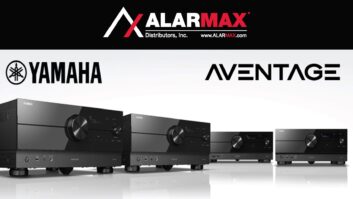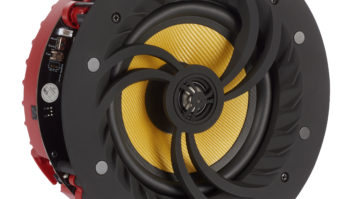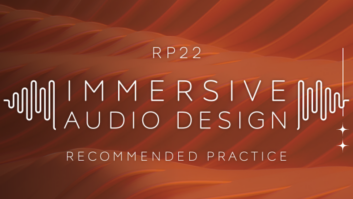
After more than three decades with Yamaha, Tom Sumner has found himself in a very unique position — twice (if such a thing is possible).
In addition to being the first American-born president of Yamaha Corp. of America, a role he took on in 2018, he also this month became the first American-born operating officer of Yamaha Corporation.
Sumner has held a variety of roles at the Japanese manufacturer throughout his 31 years, including stints in both its musical instrument and computer divisions. We recently spoke with him to get his perspective on the current state of the home audio market — including how physical retailers may have an important advantage in selling it. Here’s an edited version of our conversation.
Let’s hear the elevator-pitch background for Yamaha.
Yamaha is the world’s largest musical instrument company — we make one out of four musical instruments sold in the world today. We’ve been making them since about 1887, and our expertise is that we just do music and sound.
What’s your view on the health of the home audio market?
It depends how you define it, [but] overall the market is actually really healthy. If you look at headphones, those are crazy great. We don’t do a lot in that business, but it’s really strong.
The smart speaker and home speaker business is very good. Two-channel is very good. The soundbar business is very good.
And AVRs, which is a lot of what people consider the core of the home-theater market, is not so bad. It’s not great — it was down about 3 percent last year.
See also: TWICE’s Consumer Tech Guide to Headphones
One of the interesting things is that four to five years ago, AVRs were kind of [perceived as] doomed. When we looked at our customer base, we were selling to folks who were in their 40s, 50s and 60s replacing other AVRs they had.
That customer base has really turned around the last three to four years. We’re selling a lot more — the majority of AVRs are sold to consumers in the 20s to 30s range. So even though they’re down, we’re not at all negative on their future. They still have a customer base that is at least not dying off. It’s not their last Yamaha — it might be their first Yamaha.
Who’s buying AVRs now?
There’s still the replacement customer. Those are largely folks who have had an AVR in the past for a fairly long period of time. They end up having to replace it not because it breaks, but because some new equipment has the newest version of HDMI or they got a new set-top box.
Watch: Google Unveils Stadia
The younger customer — the 20s, 30s customer — one of the key drivers is immersive gaming, which is actually not surprising. The other is the desire to have family gathered around the TV with videos. Years ago, it was VHS or DVD or Blu-ray, and now it’s more Netflix. They still want that great experience.
Which features are important to them?
Simplicity is still important for folks, and AVRs are not so simple. The No. 1 thing customers want from an AVR and a home theater setup is great sound, which for them means immersive sound. We’ve tried to answer those questions with a couple things. We have Surround:AI, which solves a problem we heard from customers: “I love the immersiveness of a home-theater setup, but I’m watching an action film and I can’t hear the dialogue.” It forces them to go to the remote.
See also: Forget Millennials: How To Tap Into Gen Z’s $143B Wallet
We looked at that as an issue to solve for the customer, and we came up with this artificial intelligence that works pretty consistently. It monitors the sound of the film and the content. On an action film, if you have explosions and car crashes, without Surround:AI, it muffles the dialogue. Instead of just running that same DSP [digital signal processing] throughout the whole movie, it switches back sometimes several times a second to [detect] if it’s dialog or a dramatic scene. That makes the customer experience better and simple.
The other thing that’s a pain point for customers for surround sound is getting those rear speakers set up. We’ve seen a lot of times where the customer has a 5.1 surround system, and they have all five speakers front and center, which defeats the purpose of surround sound. Or they have zip cords going under carpet or something unattractive. With our MusicCast product we introduced MusicCast Surround, which basically gives you wireless rear surround. You still have to plug them in, but the signal is at least wireless.
What do you see as the biggest market challenge?
It’s really customers finding time to enjoy their home system. If you look at headphones, they’re very strong in the out-of-home market. Streaming services are very strong as well, but that kind of speaks to on-the-go.
See also: Yamaha Integrates Josh.ai Into A/V Receiver Lineup
One of the things that always amazes me is when I look at European customers, there are those who will go home and have a glass of wine or beer and listen to music for an hour or so. And we don’t seem to have that in the U.S. anymore.
Or even chilling and watching a movie — that has that experiential piece from the customer, and that seems to be slipping away a bit. There’s a lot more folks binge-watching the latest episode on their phone or tablet while they have an extra 30 minutes at Starbucks. From a customer experience standpoint, customers can get a really stronger and immersive audio experience than [ever before] and especially for the price. The challenge is getting to the customer and kind of having them come up with that “chill time” so they can enjoy what they’re doing.
How do those challenges in turn translate to consumer tech retailers?
In the retail space, we’ve had lots of discussions with retailers about how to give that kind of immersive experience so people say, “Wow, I really want to take that home with me.”
Watch: Apple’s New Apple TV+
There are plenty of local retailers that give that kind of immersive experience. The challenge with some of the people shopping online is you don’t get that visceral experience. Having that, I think realistically gives the local or regional retailer a leg up. They can make the customer have that experience in their home.
How do you work with retailers to provide that kind of experience?
We’ve tried to come up with POP-type stuff and work with retailers on that. In general, the retailer needs to have their own vignettes or own kind of setup where they can entice the customer and really wow the customer with the displays. It’s not just “What does it look like?” but getting the whole experience. Sit them down and really get them to understand the difference between speakers and receivers.
How does Yamaha intend to integrate as consumers build out their smart homes?
Voice is definitely the new control mechanism. It’s still working its way to be compelling to customers. Sixty million homes have some sort of smart device or smart speaker in them. We have Alexa integration with quite a few of our products. That’s where we are today, and we continue to try to make that compelling for users.
There are some unique challenges to audio. When you say, “Alexa, turn down the music,” Alexa can’t always hear you.
How do you get around it?
Array microphones are critical for that so they can block out that noise. The other [solution] is having a setup with multiple [Amazon] Dots or something where you can have a Dot closer to you that reacts. It’s a challenge to make the customer experience really good.
What can you share about what’s on Yamaha’s horizon for 2019 and beyond?
A couple of key things we’re focusing on is building out MusicCast. Last year we added the Vinyl 500 turntable — a product we conceived of when we thought of MusicCast four years ago, but it took that long to get a true wireless turntable that not only had the ability to play vinyl but had streaming services built in.
The other thing is two-channel. Two-channel is a much smaller business than home theater — and definitely smaller than headphones — where we’ve seen great growth in the last several years. We’re seeing growth as far as passion around music and passion around getting great sound quality. In two-channel, there’s the 20s, 30s customers, and not your 50s, 60s customers.













